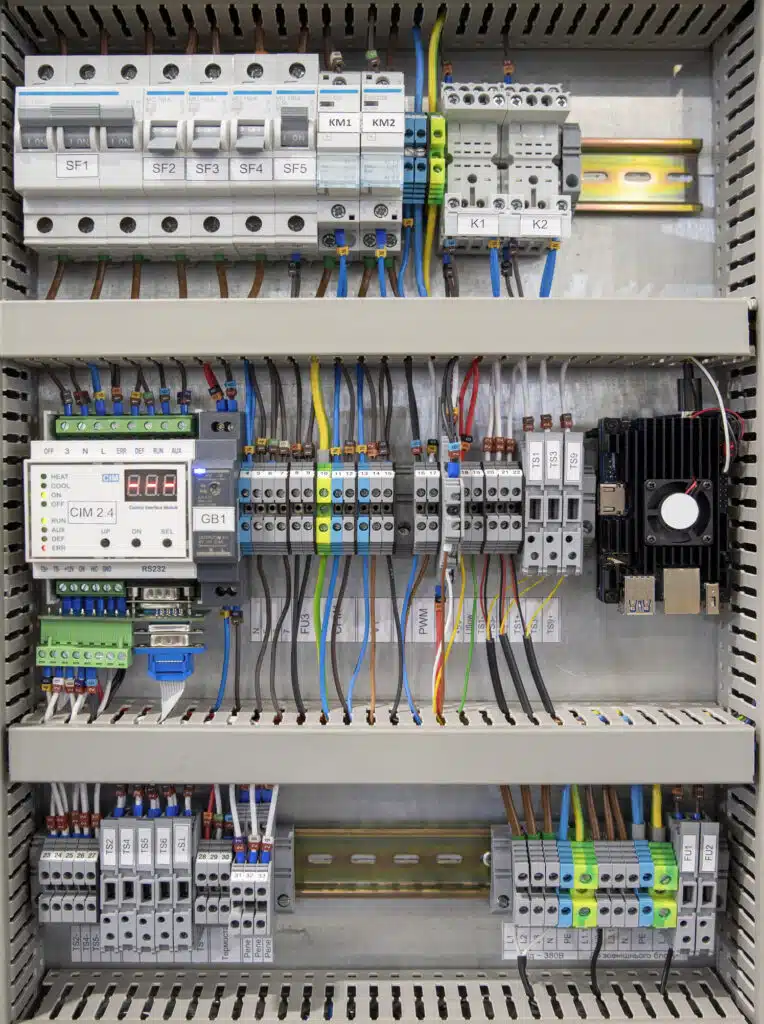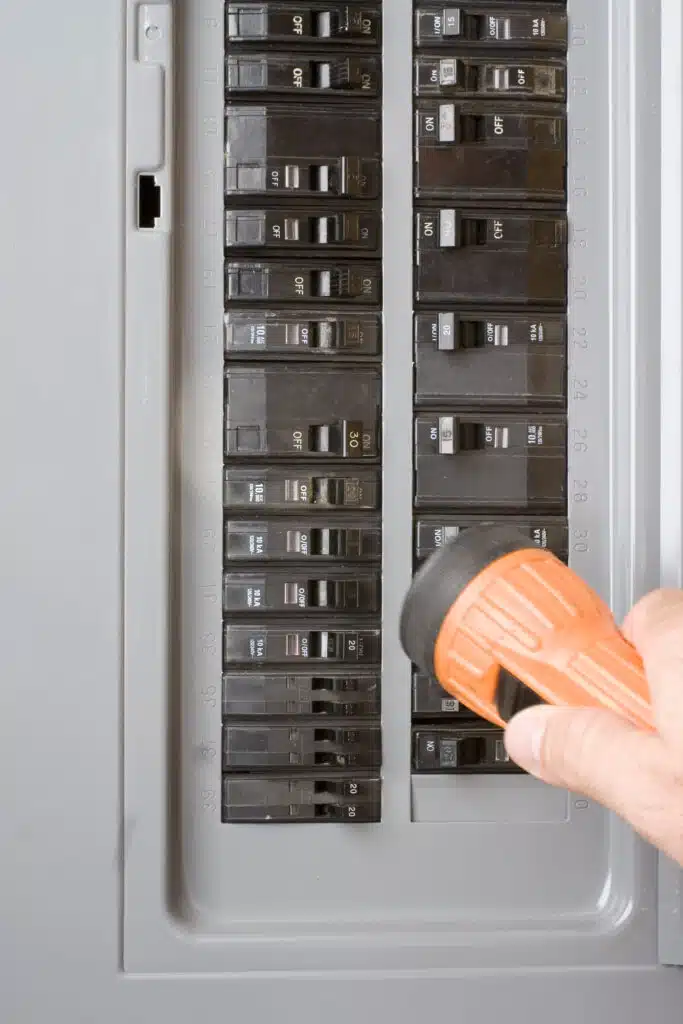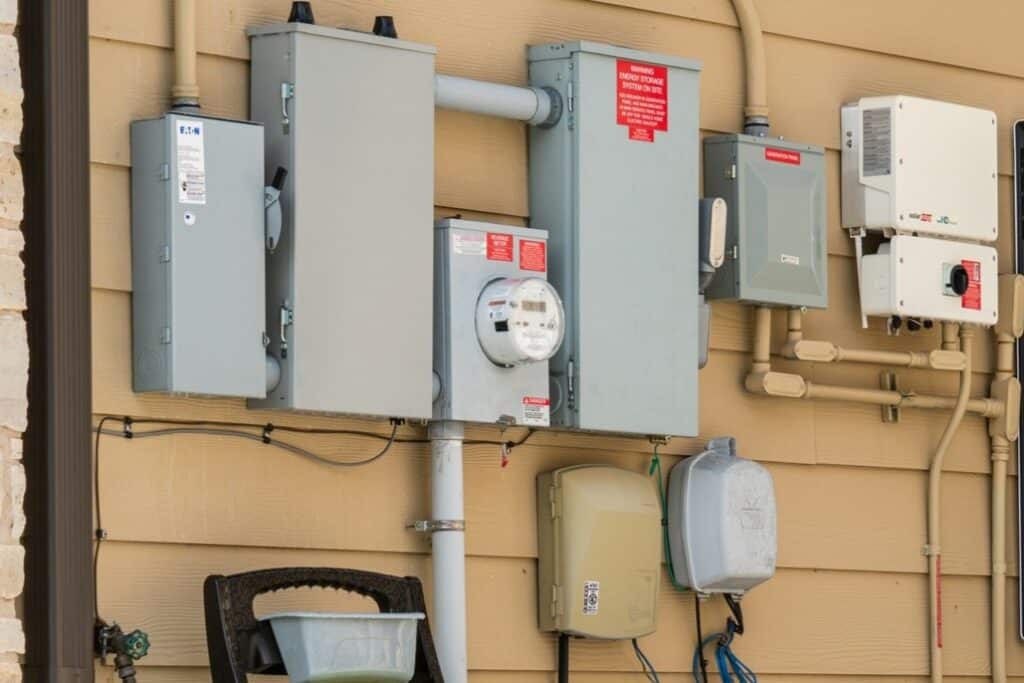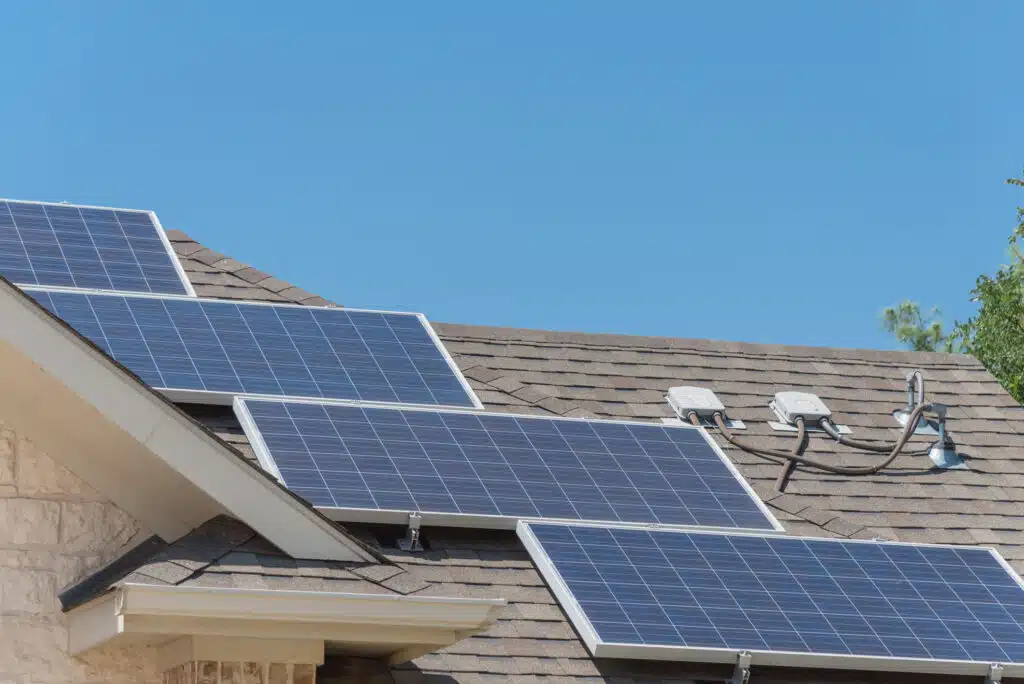When it comes to enhancing home comfort and managing energy costs, installing ceiling fans is a smart move for Lancaster residents. These fixtures are not only functional but can also add aesthetic value to various rooms in your home. Whether you’re living in the bustling environment of Lancaster, PA, or the quieter surroundings of Harrisburg, PA, the right ceiling fan can make a significant difference in how you experience your space.
Choosing the perfect ceiling fan involves considering several factors such as room size, fan size, style, and features. It’s essential to select a fan that fits well with your room’s dimensions and complements its decor. This ensures optimal airflow and efficiency, which are crucial for achieving the desired comfort levels throughout the year.
Installing ceiling fans can also lead to noticeable reductions in energy costs. By circulating air more efficiently, these fans can help maintain comfortable temperatures without over-relying on air conditioning and heating systems. This is particularly beneficial during the warm summers and chilly winters in Pennsylvania, where energy usage can spike.
Before diving into the selection and installation process, it’s important to understand the basics and benefits of different types of ceiling fans. This guide aims to provide Lancaster homeowners with the knowledge needed to make informed decisions about installing ceiling fans that align with their needs and preferences. By following these insights, you can enhance both the comfort and efficiency of your home.
Benefits of Installing Ceiling Fans in Lancaster Homes
One of the primary benefits of installing ceiling fans in Lancaster homes is the enhancement of indoor air quality and comfort. Ceiling fans are adept at promoting air circulation, which helps in evenly distributing both heated and cooled air throughout the room. This results in a more comfortable living environment and can be especially beneficial in areas like Lancaster, PA, where seasonal temperature fluctuations are common.
In addition to comfort, ceiling fans significantly contribute to energy efficiency in the home. By using ceiling fans in conjunction with heating and cooling systems, homeowners can raise their thermostat settings in the summer and lower them in the winter. This adjustment reduces the workload on HVAC systems, thereby conserving energy and potentially lowering utility bills. For residents in Harrisburg, PA, where energy costs can mount up, this can translate into substantial savings.
Furthermore, ceiling fans add an element of style and sophistication to any room. They come in a variety of designs, from modern to traditional, fitting seamlessly into any decor. This versatility allows homeowners to enhance not only the functionality but also the aesthetic appeal of their living spaces. Installing ceiling fans offers an opportunity to make a style statement while improving comfort and functionality.
Lastly, the installation of ceiling fans can increase the overall value of a home. Prospective buyers often view ceiling fans as a desirable feature that adds to the home’s appeal and functionality. This perception can make a property more attractive on the market, potentially speeding up the sale process and increasing the final sale price. For Lancaster residents considering future resale, installing ceiling fans could be a wise investment.

Choosing the Right Ceiling Fan for Each Room
Choosing the right ceiling fan for each room in your Lancaster home involves more than just picking a design you love, it requires careful consideration of several factors to ensure efficiency and aesthetic harmony. The size of the room is a primary determinant of the fan size needed. A large room will need a bigger fan or multiple fans to achieve effective air circulation, while a smaller room can be adequately served by a smaller model. This ensures that the fan can perform its task without overwhelming the space visually or functionally.
The ceiling height is also crucial when installing ceiling fans. Rooms with high ceilings may benefit from fans that have downrods, allowing the fan to be positioned at an optimal level for improved air flow. Conversely, in rooms with lower ceilings, flush-mounted fans are ideal to maintain a safe clearance level. It’s essential to choose a fan that complements the specific characteristics of each room to optimize both performance and safety.
In addition to size and mounting type, the style and features of the ceiling fan should align with the room’s existing decor and the homeowner’s personal preferences. Whether the setting is a modern Harrisburg apartment or a traditional Lancaster house, there’s a ceiling fan to match. Options range from fans with minimalist designs and basic functionality to those with elaborate patterns, lighting fixtures, and advanced control systems. Selecting a fan that enhances the room’s aesthetic can also contribute to a cohesive home interior.
Lastly, consider the intended use of the room when selecting a ceiling fan. A bedroom might require a fan with a quiet motor and adjustable lighting, while a living area could benefit from a fan with robust air circulation capabilities and durability. Tailoring the fan’s features to the room’s function ensures not only comfort but also enhances the utility of the space. By thoughtfully selecting a ceiling fan for each room, Lancaster and Harrisburg residents can significantly boost both the comfort and efficiency of their homes.
Necessary Tools and Materials for Installing Ceiling Fans
Before you begin the task of installing ceiling fans in your Lancaster home, gathering the necessary tools and materials is crucial. Essential tools include a ladder for reaching the ceiling, a screwdriver for assembling and securing the fan components, and a wire stripper for electrical connections. It’s also advisable to have a voltage tester to ensure safety during installation. Ensuring you have these tools on hand will streamline the installation process and prevent unnecessary interruptions.
In addition to basic tools, several materials are needed to successfully complete the installation. These include ceiling fan mounting brackets, wire nuts for secure electrical connections, and the ceiling fan kit itself. Depending on your ceiling type, you might also need additional supports or braces, especially if the existing fixture isn’t capable of supporting the fan’s weight. Preparing these materials beforehand will help in achieving a smooth installation process.
For residents of Harrisburg, PA, who are preparing to install a ceiling fan, it’s important to review the manufacturer’s instructions included with the ceiling fan kit. These instructions typically provide specific details about the required tools and any additional materials needed for your particular model. This step is essential to ensure that the fan is installed correctly and operates safely.
Lastly, consider the aesthetic elements of the fan that might require specific handling, such as delicate glass lamp shades or custom blades. Handle these components with care during installation to avoid damage. By meticulously preparing all necessary tools and materials, you are setting the stage for a successful installation of your new ceiling fan, enhancing both the comfort and value of your home.
Preparing to Install Your Ceiling Fan
Preparing to install your ceiling fan in Lancaster or Harrisburg involves a few critical steps to ensure a smooth and safe process. First, it’s essential to turn off the power to the circuit where the fan will be installed. This can be done at your home’s main electrical panel by switching off the circuit breaker. Confirming that the power is off using a voltage tester can prevent any electrical accidents and is a crucial safety measure when installing ceiling fans.
Next, it’s important to identify the mounting location on the ceiling. This spot should be centrally located to optimize air distribution throughout the room. If replacing an existing light fixture with a ceiling fan, ensure that the electrical box is rated to support the weight and vibration of the fan. If not, you may need to install a new box that is suitable for ceiling fans, which can handle heavier loads.
Once the correct electrical box is in place, assemble the fan components according to the manufacturer’s instructions. This usually includes attaching the fan blades to the motor and preparing the wiring. It’s helpful to have all the components laid out and organized before beginning. This not only speeds up the process but also helps in ensuring that no parts are missing or overlooked.
Finally, lift the fan to the ceiling and connect the wiring, following the color-coded wires for proper connections. Secure the fan to the mounting bracket and ensure it is stable and well-balanced to prevent wobbling. After the fan is installed, restore power and test the fan to ensure it operates correctly. By carefully preparing and following these steps, residents of Lancaster and Harrisburg can successfully enhance their home’s comfort and style by installing ceiling fans.
Step-by-Step Guide to Installing Ceiling Fans
After preparing all necessary tools and ensuring safety measures, the next step in installing ceiling fans involves mounting the fan bracket. This bracket will support the weight of the fan, so it’s essential to secure it properly to the ceiling. In Lancaster, PA, homes with older construction might require extra attention to ensure the bracket is fixed solidly into a ceiling joist. If you’re unsure about the joist location, using a stud finder can be very helpful.
Once the bracket is securely in place, the motor unit of the fan can be mounted. Carefully lift the motor and hook it onto the bracket, depending on the design of your fan model. This step often requires some physical strength, so having a helper can prevent mishaps and make the process smoother. In Harrisburg, PA, homes with higher ceilings might need a longer downrod to ensure the fan hangs at an optimal height for air circulation.
Next, it’s time to connect the wiring. This is a critical step where precision is key to avoid any electrical issues. Color-coded wires should be connected according to the manufacturer’s instructions, usually, black to black, white to white, and green to ground. Secure all wire connections with wire nuts and ensure no loose wires are exposed. This not only ensures safety but also the efficient operation of your ceiling fan.
Finally, attach the fan blades and any light fixtures if applicable. Once everything is assembled, it’s crucial to ensure that all screws are tightened and that the fan blades are well-balanced to avoid wobbling. Turn the power back on and test the fan for any unusual noises or movements. Adjustments might be needed to perfect the installation. Congratulations, you’ve successfully enhanced your home’s comfort and style by installing a ceiling fan, a valuable addition to any room.

Electrical Safety Tips for Installing Ceiling Fans
When tackling the task of installing ceiling fans in Lancaster, PA, prioritizing electrical safety is paramount. Before beginning any installation, ensure that the power is completely shut off at the circuit breaker. This step is critical to prevent any accidental electrical shocks. Additionally, using a voltage tester to double-check that the power is indeed off can provide an extra layer of safety, ensuring that the installation process is both safe and efficient.
Another important safety tip involves the handling of wiring during installation. When connecting the fan’s wiring, it’s crucial to follow the color-coded guide provided by the manufacturer. This typically involves matching the black wires for power, white wires for neutral, and green or bare wire for the ground. Ensuring that all connections are tight and secure with wire nuts helps prevent any loose connections that could lead to electrical hazards.
In homes in Harrisburg, PA, where ceiling heights may vary, choosing the correct ladder for the job is also essential. A stable, appropriately sized ladder will provide the necessary reach and stability, reducing the risk of falls or reaching-related accidents. Make sure the ladder is set on a flat, stable surface and always keep your body centered between the rails while working. This stability is crucial when you’re working with both hands during the fan installation.
Lastly, after installing ceiling fans, it’s important to test the installation thoroughly before declaring the job complete. This includes checking for any unusual noises or vibrations when the fan is turned on, which could indicate a problem with the installation. Ensure all screws and fittings are tight to prevent any wobbling or movement of the fan. Proper testing and adjustment ensure the fan operates safely and efficiently, enhancing the comfort of your home without compromising safety.
Finishing Touches: Testing and Adjustments
After successfully mounting and wiring your ceiling fan, the next crucial steps involve testing and making necessary adjustments. This ensures that the fan operates smoothly and efficiently, providing optimal comfort in your Lancaster or Harrisburg home. Begin by turning the power back on at the circuit breaker and using the fan’s switch to start it. Observe the initial operation; a well-installed ceiling fan should run quietly without wobbling or making excessive noise.
If you notice any shaking or hear rattling, it’s important to turn off the fan and check the tightness of all screws and connections. Loose blades or a wobbly motor can cause vibrations that reduce the fan’s efficiency and lifespan. Each blade should be securely fastened, as even a slight imbalance can lead to issues. It’s also wise to check the alignment of the blades to ensure they are set at an even height, which promotes better air circulation and balance.
For those in Harrisburg, PA, where room layouts and ceiling heights may vary, adjusting the fan’s speed settings can also enhance performance. Most ceiling fans come with multiple speed settings to suit different cooling needs. Experiment with these settings to find the most effective speed that provides the desired airflow without excessive energy consumption. This step is particularly useful during different seasons when your cooling needs may change.
Lastly, consider the use of a balancing kit if minor adjustments do not eliminate wobbling. These kits are often included with the ceiling fan or can be purchased separately. They allow you to make precise adjustments to the fan blades, ensuring each one is perfectly balanced. Once your fan operates smoothly, you can enjoy the enhanced comfort and improved energy efficiency that installing ceiling fans brings to your home. With these finishing touches, your ceiling fan installation is complete, ready to provide years of service.
Maintenance Tips for Your Newly Installed Ceiling Fan
Maintaining your newly installed ceiling fan is crucial for ensuring it continues to operate efficiently and safely. Regular maintenance not only prolongs the life of the fan but also helps in maintaining its performance, which can save you money on energy costs over time. For residents of Lancaster, PA, taking the time to check and care for your ceiling fans can make a significant difference, especially during seasons when they are used frequently.
One of the first steps in ceiling fan maintenance is to regularly clean the blades and motor casing. Dust accumulates on fan blades and can cause the fan to wobble, reducing its efficiency and potentially leading to faster wear and tear. A gentle dusting with a soft cloth or brush every few months will keep the blades clean and ensure optimal performance. This is particularly important in Harrisburg, PA, where varying temperatures can cause dust to settle more quickly.
It’s also essential to check the fan’s screws and blade attachments periodically to ensure everything is tight and secure. Loose fittings can cause the fan to wobble or make unnecessary noise. During this check, it’s a good idea to verify that the fan is still securely mounted to the ceiling. This not only prevents potential accidents but also ensures that the fan operates quietly and efficiently.
Lastly, listen for any unusual noises or vibrations when the fan is running. These can be signs of loose parts or potential electrical issues. If you notice anything unusual, it may be time to consult a professional or refer to the manufacturer’s guide. Regular attention to these details will keep your ceiling fan in top condition, enhancing the comfort and beauty of your home while optimizing its energy efficiency. By following these simple maintenance tips, you can enjoy the benefits of installing ceiling fans for many years.
Frequently Asked Questions About Installing Ceiling Fans
What tools are needed for installing ceiling fans in Lancaster homes?
When installing ceiling fans in Lancaster homes, several essential tools are required to ensure a smooth and safe installation process. A screwdriver, wire strippers, and a ladder are fundamental tools to have on hand. Additionally, it’s wise to use a voltage tester for safety purposes when handling electrical connections. Ensuring you have these tools ready before starting the installation can help streamline the process and prevent any unnecessary complications.
How do you choose the right ceiling fan size for your room in Lancaster?
Choosing the right ceiling fan size is crucial for optimal airflow and efficiency in your Lancaster home. The size of the room determines the fan blade span needed; for instance, a small room up to 75 square feet requires a fan that is 29 to 36 inches in diameter. For medium-sized rooms up to 175 square feet, a fan measuring 36 to 42 inches is ideal. When installing ceiling fans in larger spaces, opt for a fan that is 50 to 54 inches to ensure it effectively circulates air throughout the room.
What are the safety precautions to consider when installing ceiling fans?
When installing ceiling fans, prioritizing safety is essential to prevent accidents and ensure a secure installation. First, always turn off the power at the circuit breaker before beginning any work to avoid electrical hazards. It’s also important to use a sturdy ladder that provides stable support while you work at height. Lastly, ensure that the ceiling fan is securely attached to a properly anchored electrical box designed to hold a fan’s weight, which will prevent any dangerous wobbling or potential falls.
Can installing ceiling fans reduce energy costs in Lancaster?
Yes, installing ceiling fans can indeed reduce energy costs in Lancaster homes. By circulating air more efficiently, ceiling fans allow you to adjust your thermostat settings, leading to lower heating and cooling expenses. During warmer months, a ceiling fan’s downdraft helps cool rooms, which can lessen the reliance on air conditioning systems. Conversely, reversing the fan to an updraft in colder weather can distribute warm air evenly, enhancing your home’s heating efficiency.
What are the common issues faced during the installation of ceiling fans?
Common issues during the installation of ceiling fans often involve improper balancing and electrical complications. An unbalanced fan can lead to annoying wobbles and increased wear on the fan’s motor, which detracts from its efficiency and longevity. Electrical challenges might include incorrectly matched wires or a lack of a suitable electrical box, which is crucial for safely supporting the fan’s weight. To avoid these problems when installing ceiling fans, it’s advisable to carefully follow the manufacturer’s instructions and double-check all connections.


































